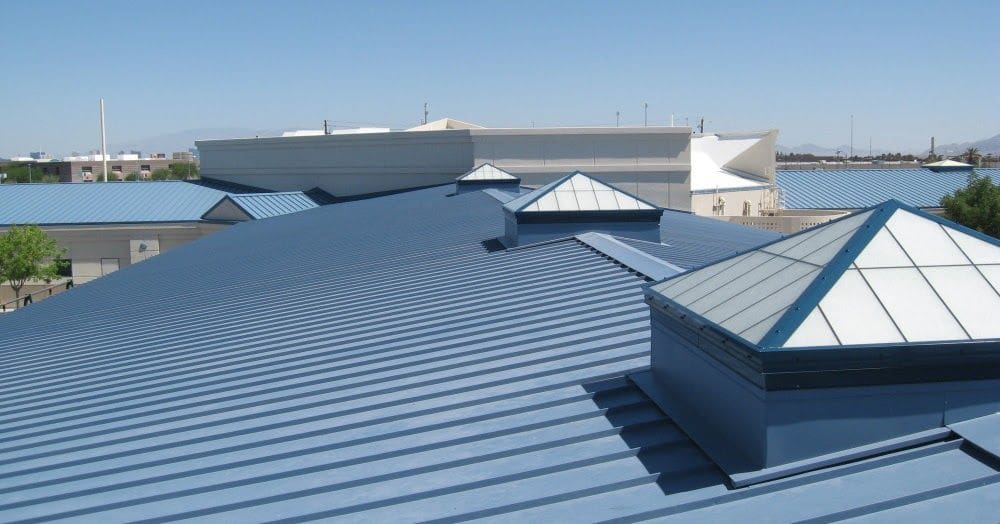The roof of any house is not only its crowning glory, but it’s a vital layer of protection against the elements. Over time, however, these weather barriers naturally degrade and need replacement. The cost of installing a new roof can be quite substantial, thus prompting many homeowners to consider different financing options. This article will provide a brief overview of the pros and cons of financing your new roof.
The decision to install a new roof is a significant one, both in terms of cost, as well as the overall value and protection it adds to your home. Understanding the different financing alternatives available can make this daunting task much less stressful. The choice between paying upfront or financing your new roof can have a substantial impact on your financial health. Therefore, it is crucial to comprehend the advantages and disadvantages of each option.
Financing can be an excellent solution for many homeowners, allowing them to spread the cost over a period of time rather than making a single substantial payment. On the other hand, financing also comes with its own set of downsides, including the potential for higher overall costs due to interest rates. Thus, understanding these nuances is vital for making an informed decision.
This article is designed to guide you through an impartial exploration of the potential benefits and drawbacks of financing a new roof. It aims not only to educate you on the matter but also to help you make the best decision for your unique situation.
What is Roof Financing?
Roof financing is a strategic method homeowners use to fund their roofing needs. This term encompasses the various financial options available to pay for a new roof or roof repairs. These financial mechanisms could be a loan, credit, or any other form of financial aid, specifically aimed or used to cover the costs associated with installing or repairing a roof. Essentially, instead of paying a lump sum upfront, roof financing allows homeowners to break down the cost into manageable monthly payments. This option is particularly attractive to those who may not have the immediate funds to cover such large expenses.
Variety of Roof Financing Options
There is a variety of roof financing options available to homeowners. One common option is a personal loan. This is a type of unsecured loan, meaning it does not require any collateral. Interest rates vary depending on the lender and the individual’s creditworthiness. Another popular choice is home equity loans or lines of credit. These are secured loans that use the homeowner’s equity in their property as collateral. They typically offer lower interest rates than personal loans. Credit cards may also be used, although they often carry higher interest rates. Finally, some roofing companies offer financing options, including payment plans and partnerships with lenders.
Evaluate the Cost-Effectiveness of Each Choice
In considering the various options, it’s important for homeowners to evaluate the cost-effectiveness of each choice. Interest rates, loan terms, and any associated fees should all be considered. Additionally, the homeowner’s credit score, financial situation, and the urgency of the roofing project will play a role in determining the best financing option.
In conclusion, roof financing provides a viable solution for homeowners faced with the significant expense of a new roof or major repairs. By breaking down the cost into manageable payments, it allows homeowners to maintain the integrity and safety of their homes without a massive upfront financial burden.
Pros of Financing Your New Roof
The Ability for Immediate Implementation
Moving on to the benefits of financing your new roof, one of the most prominent advantages is the ability for immediate implementation. If your roof has suffered damage or is in dire need of replacement, waiting until you have saved enough money to cover the entire cost can result in further damage and increased expenses down the road. With financing, there’s no need to delay the necessary work. The project can commence immediately, ensuring your home remains safe and secure.
Flexible Repayment Options
In addition to this, financing your new roof provides flexible repayment options. Many financing plans offer monthly payments that can be adjusted to fit your budget. This flexibility allows homeowners to manage their finances more effectively, without having to make significant sacrifices elsewhere. It’s about finding a balance that works for you and your financial situation.
The Opportunity for Tax Advantages
Another potential benefit to financing your new roof is the opportunity for tax advantages. In certain circumstances, the interest paid on home improvement loans, such as a new roof, may be tax-deductible. This could potentially lower your overall tax liability and save you money in the long run. However, it’s essential to consult with a tax professional to understand the specific tax implications for your situation.
Preserve Your Personal Savings
Lastly, financing a new roof allows you to preserve your personal savings. By opting for a loan or similar financing option, you can keep your savings intact for emergencies or other unforeseen expenses. This way, you’re not depleting your safety net for home improvements. Instead, you can maintain financial stability while also ensuring your home remains in good repair.
Cons of Financing Your New Roof
The Interest Rates
Despite its many advantages, financing a new roof comes with a few drawbacks that homeowners must consider. First and foremost, there are the interest rates. When you finance your new roof, you’re not simply paying back the cost of the roof; you’re also paying an additional sum in the form of interest over the life of the loan. This can significantly increase the total amount you end up paying and may make financing a more expensive option compared to saving up for the expense or paying upfront.
The Potential for Falling Into Debt
Another major concern is the potential for falling into debt. Financing your roof implies that you’re committing to regular payments over an agreed period. If your financial situation changes and you can’t keep up with the payments, you risk falling into debt. This could further exacerbate your financial challenges and add a layer of stress to an already challenging situation.
The Effect on Your Credit Score
The third downside to financing your new roof is the effect it can have on your credit score. If you’re late with your payments or, worse, miss them altogether, your credit rating can take a significant hit. This could limit your access to future loans or result in higher interest rates, making financial management more difficult in the long run.
Requires a Long-Term Commitment
Lastly, financing a new roof usually requires a long-term commitment. Depending on your loan term, you might be tied into repayments for several years. While this might be manageable, it’s important to remember that your financial situation can change. The commitment to these payments could limit your financial flexibility in the future, making it harder to adapt to unexpected expenses or changes in income. While financing your new roof can be a viable solution, it’s crucial to consider these potential drawbacks and weigh them against the benefits before making a decision.
Alternatives to Financing a New Roof
Paying Out-Of-Pocket
For homeowners contemplating whether to finance their new roof or explore other alternatives, it’s crucial to consider all available options. One commonly considered alternative is paying out-of-pocket. This method eliminates the potential burden of interest rates and long-term financial commitments associated with financing. However, it requires a substantial amount of savings, which may not be feasible for everyone.
Obtaining a Home Equity Loan
Another viable alternative is obtaining a home equity loan. This type of loan allows homeowners to borrow against the equity they’ve built up in their homes. Compared to roof financing, home equity loans often have lower interest rates and provide tax benefits. However, they come with a significant risk: if you default on this loan, you could potentially lose your home.
Government Grants or Loans
Government grants or loans present another option for homeowners. Programs like the Federal Housing Administration’s (FHA) Title I Property Improvement Loan program offer loans specifically for home improvements, including roof replacements. These loans can be beneficial due to their lower interest rates and flexible repayment terms. Nonetheless, they require eligibility and the application process can be time-consuming.
Leverage Insurance Policies
Lastly, some homeowners may be able to leverage their insurance policies to cover the cost of a new roof. If your roof was damaged due to natural disasters or unforeseen events, your homeowner’s insurance might cover a portion or all of the replacement costs. However, this depends on the specific terms of your policy and often requires thorough documentation and inspections.
In conclusion, while financing a new roof has its pros and cons, several alternatives are available. Whether you choose to pay out-of-pocket, take out a home equity loan, apply for government grants or loans, or file an insurance claim, each option carries its own risks and benefits. Thus, it’s important to carefully consider your personal financial situation and long-term plans before making a decision.
Conclusion
Financing a new roof is a significant decision that can have a lasting impact on your financial situation. Therefore, it is of utmost importance to recap the pros and cons associated with this decision. On the positive side, financing can make a new roof more affordable by spreading the cost over a period, instead of requiring a lump sum payment. It can also provide an opportunity for those who don’t have the immediate funds to improve their homes. Some financing options even offer promotional periods with no interest.
However, on the downside, financing a new roof means committing to long-term repayments, which can span several years. This might lead to higher overall costs due to the accruement of interest. Furthermore, depending on the type of loan, you might need to use your home as collateral, putting it at risk if you default on the loan.
Deciding on the best way to finance your new roof is a personal decision that should take into account your individual financial situation. It’s essential to assess your ability to meet monthly repayments, consider your long-term financial goals, and balance these against the immediate need for a new roof. While alternative options to financing like home equity loans, government grants or loans, and insurance claims can potentially alleviate some of the drawbacks associated with financing, they also come with their own sets of considerations and potential drawbacks.
Therefore, it’s vital to thoroughly explore all the options available to you, considering the pros and cons of each, before making a decision. At Stanton RECC, we help you weigh the pros and cons of financing your new roof, ensuring you make an informed decision that balances immediate needs with long-term benefits.
Name, Address, and Phone
Stanton RECC
7622 Colgate Ave, Westminster, California, 92683, US
714-451-4948
Social Media’s







